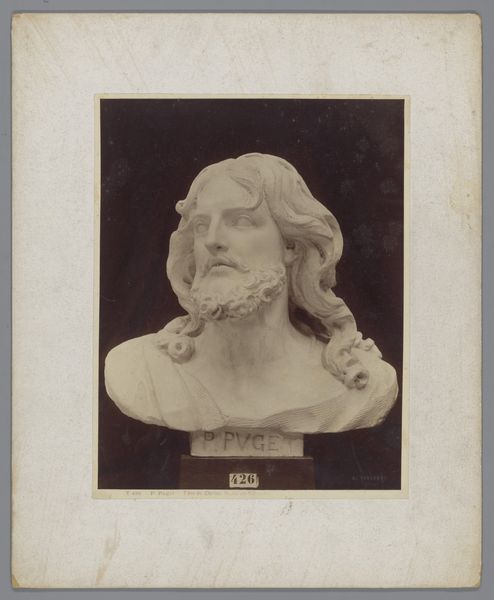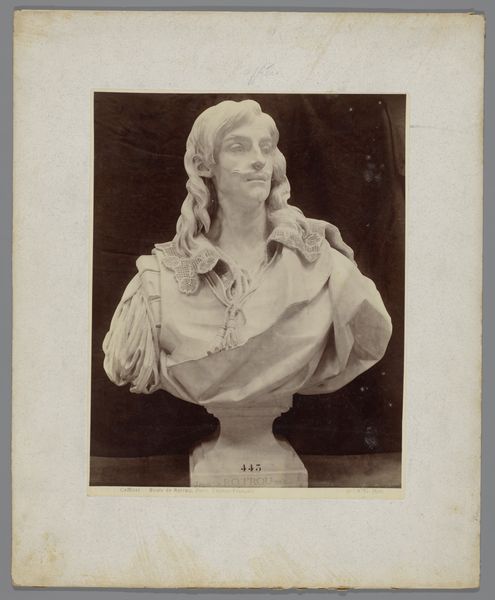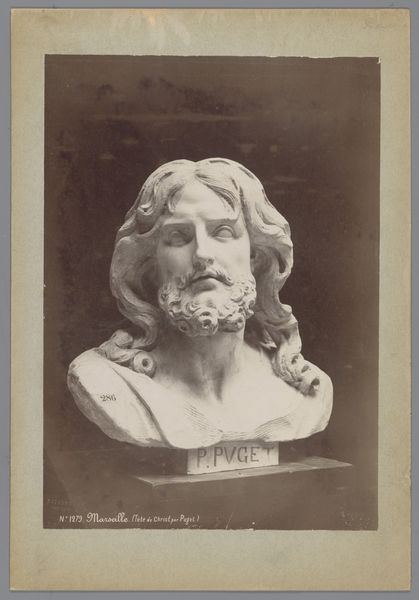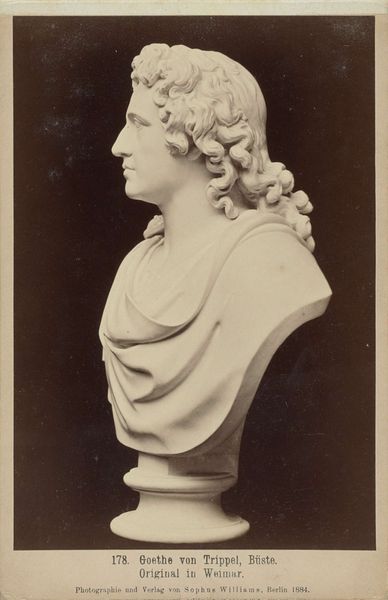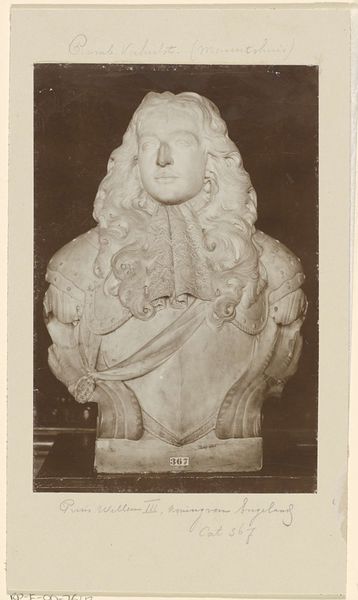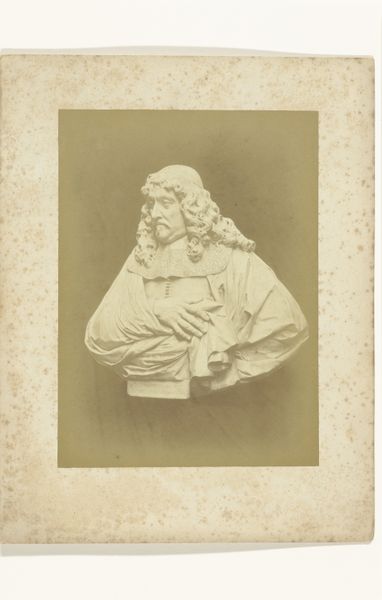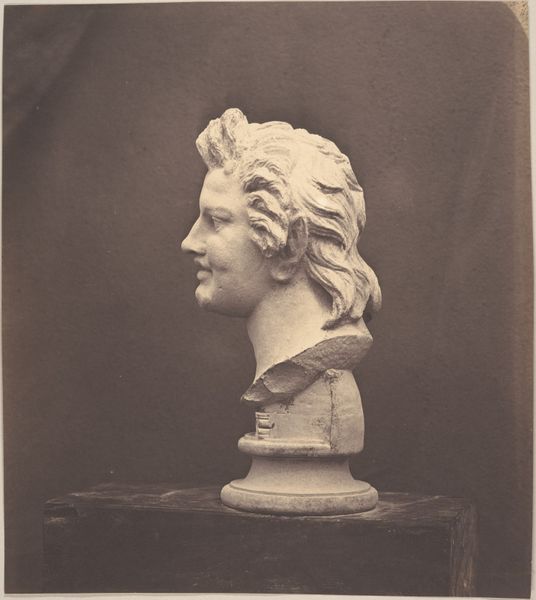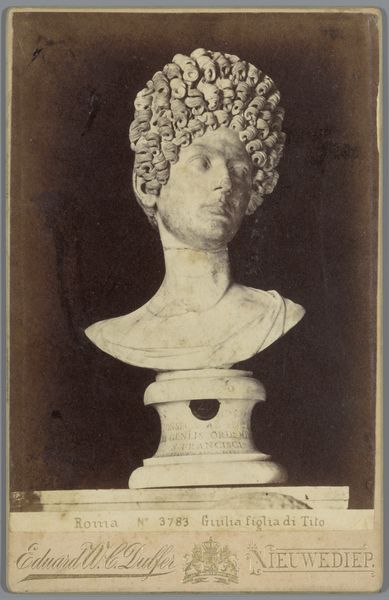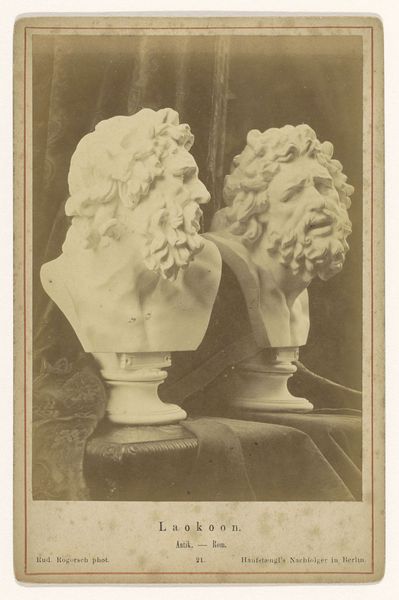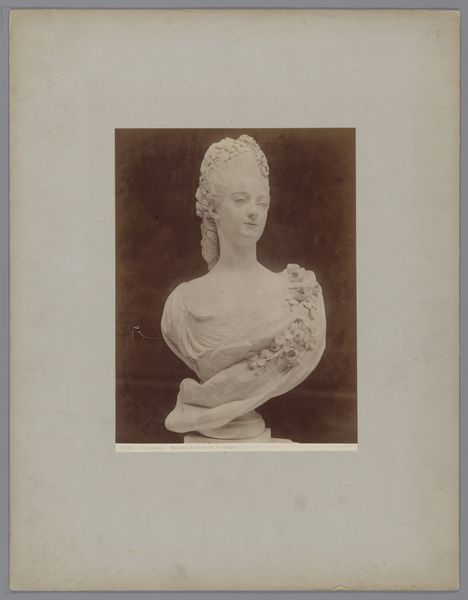
Buste van een man uit de familie Voyer d'Argenson c. 1875 - 1900
0:00
0:00
Dimensions: height 352 mm, width 248 mm
Copyright: Rijks Museum: Open Domain
Editor: So, this is "Buste van een man uit de familie Voyer d'Argenson," a photograph of a sculpture made sometime between 1875 and 1900. The sculpture itself really dominates the composition and my eye is drawn right away to the elaborate wig. What strikes you most about this image? Curator: I think it's crucial to look at how the original sculpture and its photographic reproduction reinforce notions of power and aristocratic identity. Think about the wig, for example – it's not just decorative, it’s a blatant display of wealth and status during that period. How does the artist, through the photographic medium, reproduce and potentially challenge those historical power structures? Editor: So the photograph isn't just a document, but a statement? Curator: Exactly! Photography was becoming increasingly accessible, but portraiture, particularly sculpture portraiture like this, still echoed older modes of representation reserved for the elite. Who has the power to be remembered, and how does that representation shape our understanding of history? Think about who is often excluded from these narratives and how this photograph participates in or resists that exclusion. What do you think? Editor: I guess I hadn't really considered how much the act of documenting it reiterates the subject’s importance. Curator: Precisely. The image becomes part of a larger visual language. We should always be asking: whose stories are told, whose are omitted, and what impact does that have on how we perceive our present? The way wealth, status, and power are intertwined with representation has real effects on social realities, which affect marginalised groups in particular. Editor: That’s given me a lot to consider, thanks. It makes you think about the role museums play now, deciding what's on display. Curator: Exactly, museums need to keep decolonising collections and questionning its narratives. Let’s not shy away from these conversations!
Comments
No comments
Be the first to comment and join the conversation on the ultimate creative platform.

